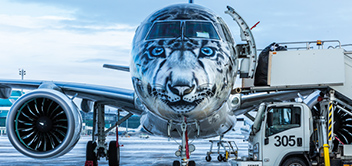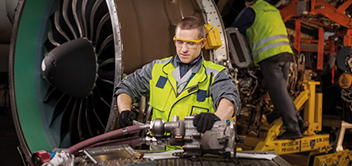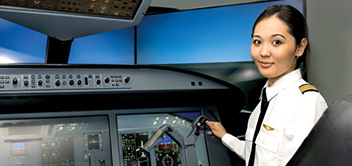
Business highlights
Air Astana’s high levels of operational efficiency and strong customer offer enabled it to maintain profitability and grow passenger numbers in 2018 despite multiple headwinds, including high fuel prices and capacity increases. Several operational developments saw Air Astana prepare for a new phase of growth.
A year of laying solid
foundations for our next
phase of growth
foundations for our next
phase of growth

In November 2018, Air Astana announced the 2019 launch of FlyArystan. The airline will be the first low-cost airline in Central Asia, which provides substantial growth opportunities, as well as an opportunity to encourage the ~90% Kazakh population that does not currently fly domestically.
One airline
two brands
two brands
Market leader
FlyArystan targets a market leading position by 2023
7/10
of the most profitable airlines globally are low-cost carriers1.
Market opportunity
There is a significant opportunity to stimulate the domestic market2.
1 Source: Air Astana‘s analysis of weekly competitors‘ reports, April 2017 – March 2018
2 Company projections based on Nomad Club members data
Market overview
Air Astana operates at the heart of the fastest-growing aviation markets in the world, which are driving continued momentum in an aviation industry that is doubling in size every 20 years.
Number of Air Astana’s 6th freedom passengers
(thousand)
Air Astana’s market share in Kazakhstan international market
34%
Air Astana
16%
Aeroflot
8%
SCAT
5%
S7
5%
Turkish Airlines
4%
Ukraine International Airlines
4%
FlyDubai
3%
Lufthansa
21%
Other







